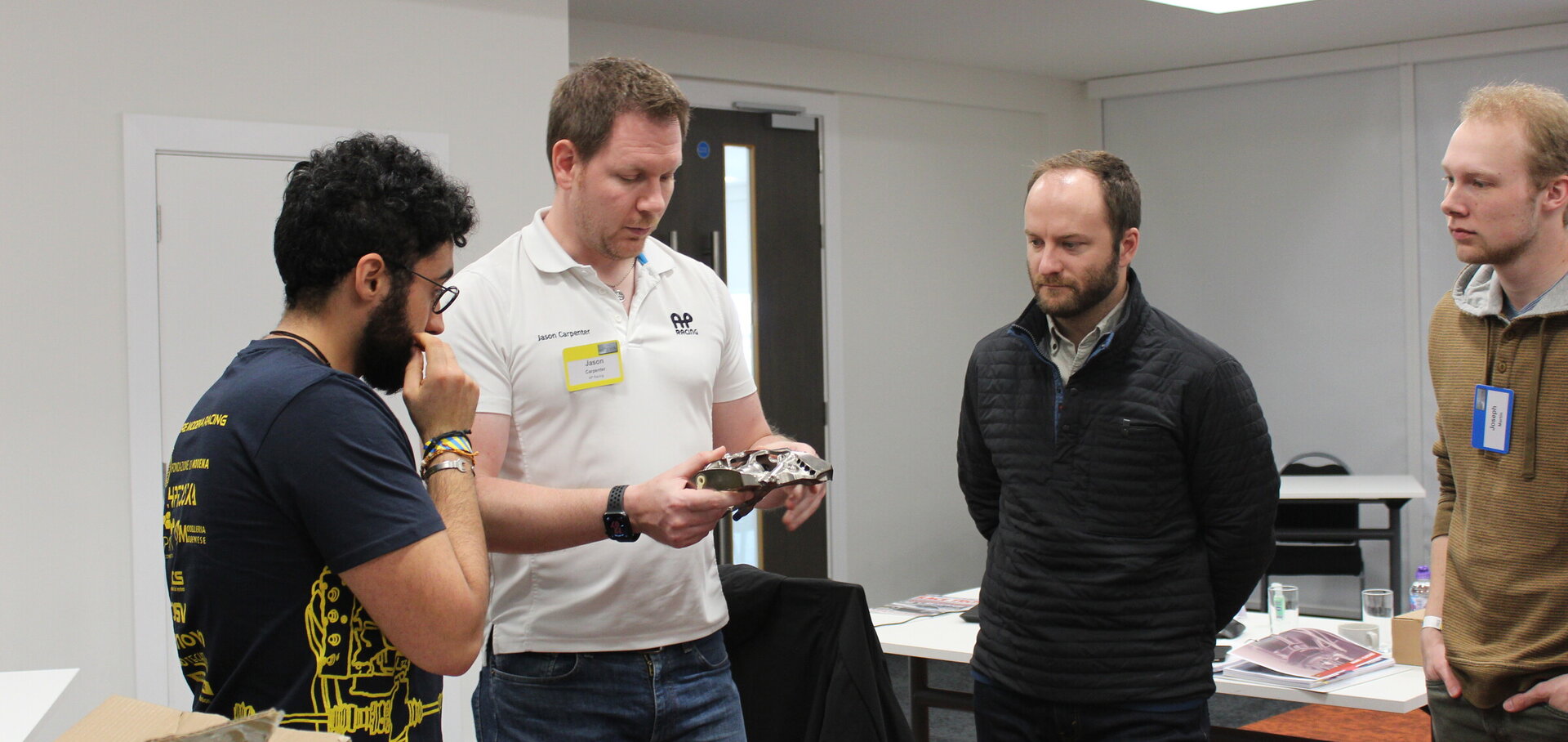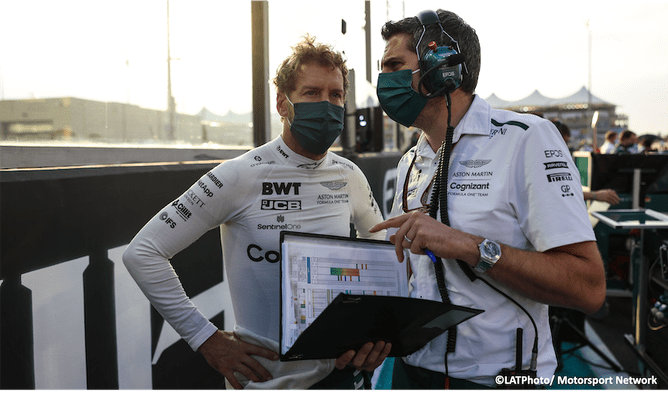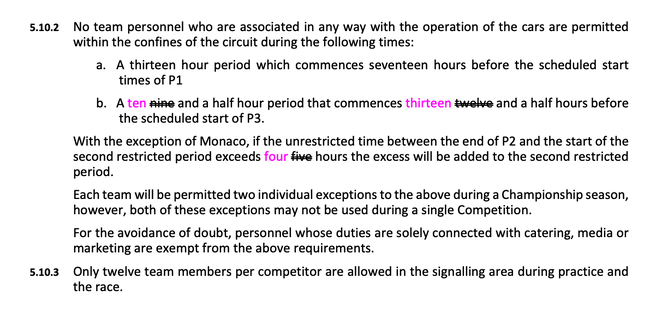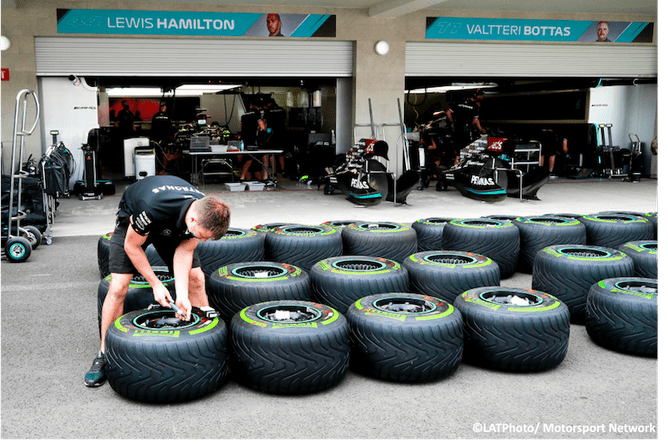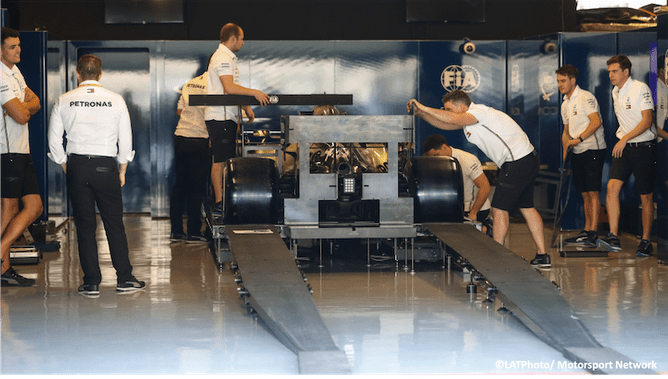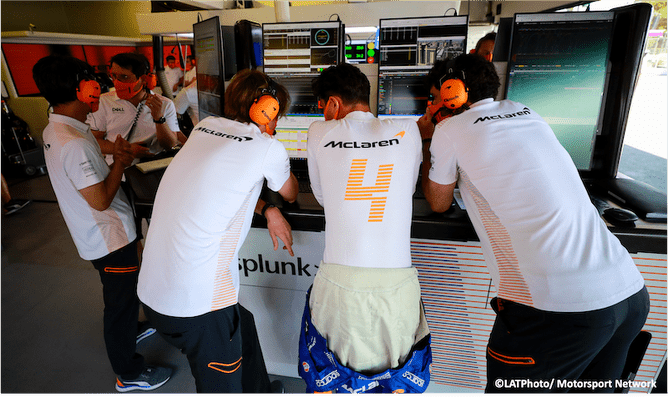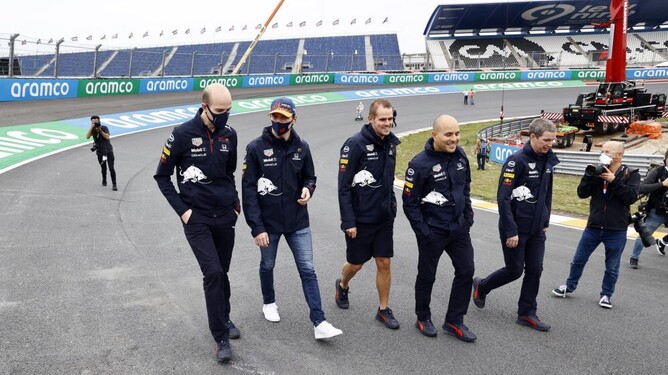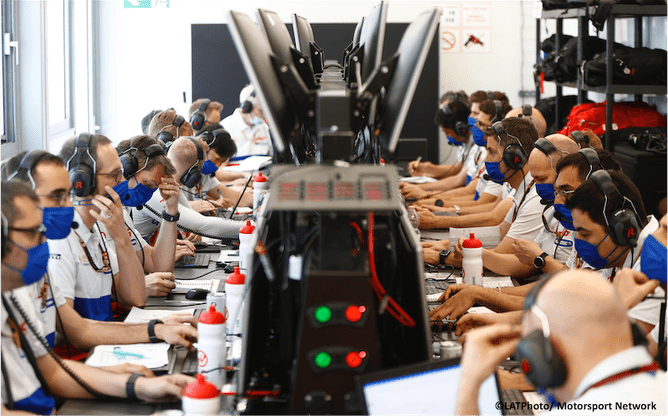The role of a Race Engineer varies drastically throughout a race weekend. To help us understand this, we’ve tasked one of our tutors, former Senior Performance Engineer at Williams Racing, to explain the jobs, responsibilities and goals of a Race Engineer during each day of a race weekend.
Race weekend schedules
Formula E aside, race weekends for most motorsport series work in a similar way to Formula One. For these blogs, we’ll use the schedule of a typical European F1 event.
Race week kicks off with pre-event meetings and debriefs at the factory. This ensures that everyone understands the particular challenges of the upcoming circuit and the goals of the weekend. The mechanics usually travel to the track at the beginning of the week to set up the garage infrastructure and equipment. The engineers fly out on either the Tuesday or Wednesday depending on how far away the circuit is.
On Thursday, the cars undergo final preparation and build before the two free practice sessions on Friday. The final practice session happens on Saturday morning, followed by qualifying in the afternoon and the main race on Sunday. In this article we’ll focus on what happens on a Thursday of a race weekend.
Curfews
A Race Engineer’s Thursday has changed a lot over the last twenty years. In the past, they would arrive late on Thursday morning and work into the night. Now, by arriving on Wednesday they have the whole of the following day available. In part, this has been driven by the FIA curfew which was introduced to crack down on working hours.
As an example, FP1 at Silverstone starts at 13:00 local time so everyone must leave the track by 20:00 on Thursday night. It was not uncommon to stay until well past midnight before these rules were introduced.
Car build is the priority
The main Thursday goal is to have two legal and scrutineered cars, ready to run. Usually, each Race Engineer assumes overall responsibility for their car, with other engineers working on individual aspects of it. This means being on top of all of the build paperwork and what everyone else is planning.
The rapid rate of development means that, although the cars are built at the factory and sent with a travel set-up, things invariably change. There may be new parts or trims coming from new CFD or wind tunnel results and last-minute mechanical parts.
The reduction of in-season testing means some Friday running is given over to performance and reliability testing. The Trackside Aerodynamicist, Systems Engineer and Control Engineer will each have new test items and fault fixes available. These must be communicated to the garage for preparation on a Thursday in order to be carried out effectively on Friday.
The Race and Performance Engineers issue set-up information to the garage. It is good practice to prepare the parts required for any scheduled set-up tests in advance. Multiple set-ups may be completed so that any unexpected adjustments can be covered off. This saves time on Friday, where every minute on track is precious.
The garage technicians managing tyre pressures and blankets require their information too. This has to be done the evening before running as the tyre blankets need to be switched on first thing on Friday morning.
Box runs
A key moment on any day at the track is the box run. Short for gearbox run, it is a systems-check in which the car is fired up and operated through a set procedure. Engine, hydraulics, gearbox, differential – all are tested and data checked. This will have been carried out at the factory, but, as the car will have been taken apart since then, another is needed. Major problems here put the whole schedule under pressure so engineering needs to be on hand.
Legality and the “Bridge of Doom”
One of the last tasks involving the car is to visit the FIA weighbridge (or bridge of doom). It is the final arbiter of legality for car weight and bodywork dimensions. The mechanics will work through a checklist of measurements during their short time slot. It is good practice for the Race Engineer to be there to ensure that the car is fully compliant and they understand any problems.
Garage and communications checks
There will be time set aside for the engineers to check their pitwall or garage workstations for the weekend. This checks for IT, power supply or intercom problems. The infrastructure is rebuilt each weekend in a new garage, so faults aren’t uncommon. Reporting a problem minutes before the first Friday session is quite unpopular, so it's important to flag any issues as soon as possible.
The track walk
A track walk with the driver is one of the more visible elements of Thursday’s schedule. They seem a little archaic amongst the technology but are a valuable part of the day. As well as checking physical changes made to the track since a previous event, they offer a period of time for the driver-specific engineering team to talk. Drivers have busy schedules so this offers a distraction-free period. Away from this, the Race Engineer will use any spare time slots to work through plans and performance with them throughout the day.
Plans, paperwork and meetings
After the car itself, the priority for the Race Engineer is to compile the run plan for the next day. Friday running is more difficult to deal with than the rest of the weekend, two one-hour sessions with ten hours of testing to complete. This means a lot of time is spent in the engineering office.
Juggling the different requirements of all of the test items is complicated but there are also other restrictions to consider. There will be meetings with power unit engineers to communicate mileage limits for different engine modes. Tyre allocations have to be made with an eye on the expected requirements for qualifying and the race. There will be a specific meeting with Pirelli’s engineer to discuss compounds and pressure/camber running limits.
There will have been a long planning meeting before everyone travelled, but this is repeated to a large extent on Thursday. Much of the work the various engineers complete will be to prepare for this. Some will be specific to Friday running but there will be preliminary discussion of expected tyre performance and strategy ahead of the race. Friday long runs have a large bearing on Sunday strategy. Faults from previous events will be covered along with their solutions or mitigations.
As the day ends, many engineers will return to the hotel to keep working, modern internet connections can be a blessing and a curse…
